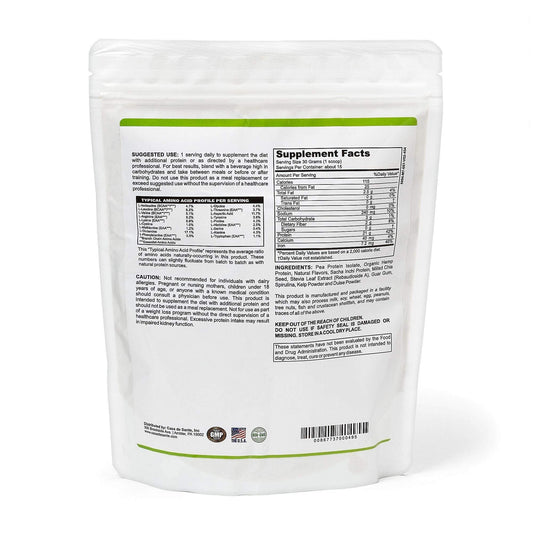Mornings with Dysautonomia: 5 Essential Tips for a Better Start to Your Day
Starting your day with dysautonomia can be really challenging. Even if you did everything right the night before, mornings can still throw you for a loop. You might feel tired, dizzy, or just off. But don’t worry, there are some simple strategies that can help you ease into your day. Here are five tips that can make your mornings a bit smoother and help you tackle the day ahead.
Key Takeaways
- Take your time getting out of bed; sit up and give your body a moment to adjust.
- Stay hydrated; drink water or an electrolyte drink as soon as you wake up.
- Use a shower chair to avoid standing too long while getting ready.
- Plan your morning routine to minimize standing; try to sit whenever possible.
- Wake up in stages; use the snooze button to give yourself more time to adjust.
1. Bed Exercises
Starting your day with dysautonomia can be tough, but a few simple exercises before you even get out of bed can make a real difference. It's all about gently waking up your body and getting your blood flowing without the sudden jolt of standing up. Think of it as a mini-warm-up for your circulatory system.
I know, the last thing you want to do when you wake up is exercise. Trust me, I get it. But these aren't intense workouts. They're gentle movements designed to ease you into the day. Plus, they only take a few minutes, so it's not a huge time commitment.
Here's why bed exercises are so helpful:
- They help to increase blood flow gradually.
- They can reduce that initial dizziness and lightheadedness.
- They can improve your overall energy levels throughout the morning.
So, what kind of exercises are we talking about? Here are a few ideas to get you started:
- Ankle Pumps: Simply point your toes up and down, then rotate your ankles in circles. Do this for a minute or two.
- Leg Raises: Lying on your back, slowly lift one leg at a time, keeping it straight. Repeat 10-15 times on each leg.
- Gentle Stretching: Reach your arms overhead and stretch your body as if you're trying to touch the ceiling. Hold for a few seconds, then relax. Repeat several times.
Doing these exercises first thing can really set the tone for a better day. It's a small change that can have a big impact on managing your dysautonomia symptoms.
If you're looking for more guidance, there are even bed yoga classes designed specifically for dysautonomia. These classes often incorporate breathing techniques and gentle movements to help you start your day feeling more grounded and energized.
I've found that incorporating these exercises into my morning routine has made a noticeable difference. It's not a cure-all, but it definitely helps to ease the transition from lying down to standing up. Give it a try and see if it works for you!
2. Hydration

Okay, so you're awake (sort of), and now it's time to tackle the hydration situation. This isn't just about chugging water; it's about getting the right fluids to help your body function when you have dysautonomia. I know, I know, it sounds like a chore, but trust me, it makes a difference.
Dehydration can really mess with your blood volume, which is already a problem with dysautonomia. Keeping your fluids up can help stabilize things and make you feel less like a wobbly mess.
Here's what I've learned about staying hydrated:
- Electrolytes are your friend. Plain water is good, but electrolytes help your body actually absorb and use the fluid. Think of it like adding fertilizer to your plants – it helps them grow better. I usually go for electrolyte powder mixes.
- Salty snacks can help too! I know it sounds weird, but a little extra sodium can help you retain fluids. Just don't go overboard – talk to your doctor about how much salt is right for you.
- Keep a water bottle with you at all times. Seriously, make it your new best friend. Sip on it throughout the morning, even if you don't feel thirsty. Prevention is key!
- Try to drink 2-4 liters of fluid a day. It sounds like a lot, but it's doable if you spread it out. Not all of it has to be water, either. You can include things like herbal tea, juice, or even broth.
I find that if I start my day with a big glass of water with electrolytes, I feel so much better. It's like jump-starting my system. Give it a try and see if it works for you!
3. Shower Chair

Showering can be a real challenge with dysautonomia. The heat, the standing, it's a recipe for feeling awful. That's where a shower chair comes in. It might seem like a small thing, but it can make a huge difference in your morning routine.
Using a shower chair eliminates the need to stand, which can significantly reduce symptom flare-ups.
I know, I know, it's not the most glamorous thing, but trust me, feeling good is way more important than looking cool while you wash your hair. Plus, it lets you actually enjoy the warmth of the water without worrying about passing out. It's a game changer, really. I put off getting one for ages, and now I wish I hadn't waited so long.
4. Morning Routine
Mornings can be especially rough when you're dealing with dysautonomia. It's like your body is still asleep even when your brain is wide awake. Establishing a solid morning routine can really make a difference. It's all about consistency and finding what works best for you.
First off, try to avoid standing for long periods right away. Standing can make POTS symptoms worse for many people. If you have to stand, try flexing your leg muscles or shifting your weight. This helps pump blood back to your heart.
A good morning routine is like setting the stage for a better day. It's not about rushing; it's about being kind to your body and giving it what it needs to function.
Here are some things that have helped me:
- Consistent Wake-Up Time: Even on weekends, try to wake up around the same time. This helps regulate your body's natural clock.
- Gentle Stretching: Before you even get out of bed, do some gentle stretches. This can help get your blood flowing and ease stiffness.
- Mindful Moments: Take a few minutes for deep breathing or meditation. This can help reduce stress and improve focus.
5. Staged Wake-Up
Mornings can be rough, especially when your body doesn't want to cooperate. With dysautonomia, that feeling is amplified. One thing that's helped me is a staged wake-up. It's all about easing your body into the day, rather than shocking it into action.
Instead of leaping out of bed the second your alarm goes off, try breaking the process down into smaller steps. This gives your body a chance to adjust to the change in position and can significantly reduce those awful dizzy spells.
Think of it as a gentle nudge rather than a sudden shove. It might take a little longer, but it's worth it to start your day feeling more stable and less like you're about to faint.
Here's how I usually do it:
- First, I sit up in bed for a few minutes. Just sitting, not doing anything else. This lets my blood pressure adjust a little.
- Next, I dangle my feet over the side of the bed for another few minutes. Again, just letting my body get used to being upright.
- Finally, I stand up slowly, holding onto something for support. If I feel dizzy, I sit back down and wait a bit longer before trying again.
It might seem like a lot of extra steps, but trust me, it makes a difference. It's all about listening to your body and giving it the time it needs to adjust. It's not a race, and there's no prize for getting out of bed the fastest. The goal is to start your day feeling as good as possible, and for me, a staged wake-up is a big part of that.
Wrapping Up Your Mornings with Dysautonomia
So, there you have it! Mornings can be a real struggle when you’re dealing with dysautonomia, but you don’t have to face them alone. By trying out these tips, you might find a little more ease in your morning routine. Remember, it’s all about taking things at your own pace and listening to your body. Some days will be better than others, and that’s perfectly okay. If you have your own tricks that help you get through those tough mornings, share them in the comments! We’re all in this together, and your experience could really help someone else.
Frequently Asked Questions
What is dysautonomia?
Dysautonomia is a condition that affects the autonomic nervous system, which controls many automatic functions in the body, like heart rate and blood pressure.
Why do people with dysautonomia feel worse in the morning?
In the morning, many people with dysautonomia wake up dehydrated because their body has been working overnight to remove excess fluid. This can make symptoms feel stronger.
What are some bed exercises I can do?
Simple exercises like ankle pumps, leg lifts, or gentle stretches can help wake up your body while still in bed.
How can I stay hydrated in the morning?
Drink a glass of water or an electrolyte drink like NormaLyte right after waking up to help your body rehydrate.
Why is a shower chair helpful?
A shower chair allows you to sit down while showering, which can prevent dizziness and helps you stay safe.
What is a staged wake-up?
A staged wake-up means getting out of bed slowly. Start by sitting up with your feet still in bed, then move to sitting on the edge of the bed, and finally stand up when you feel ready.




























